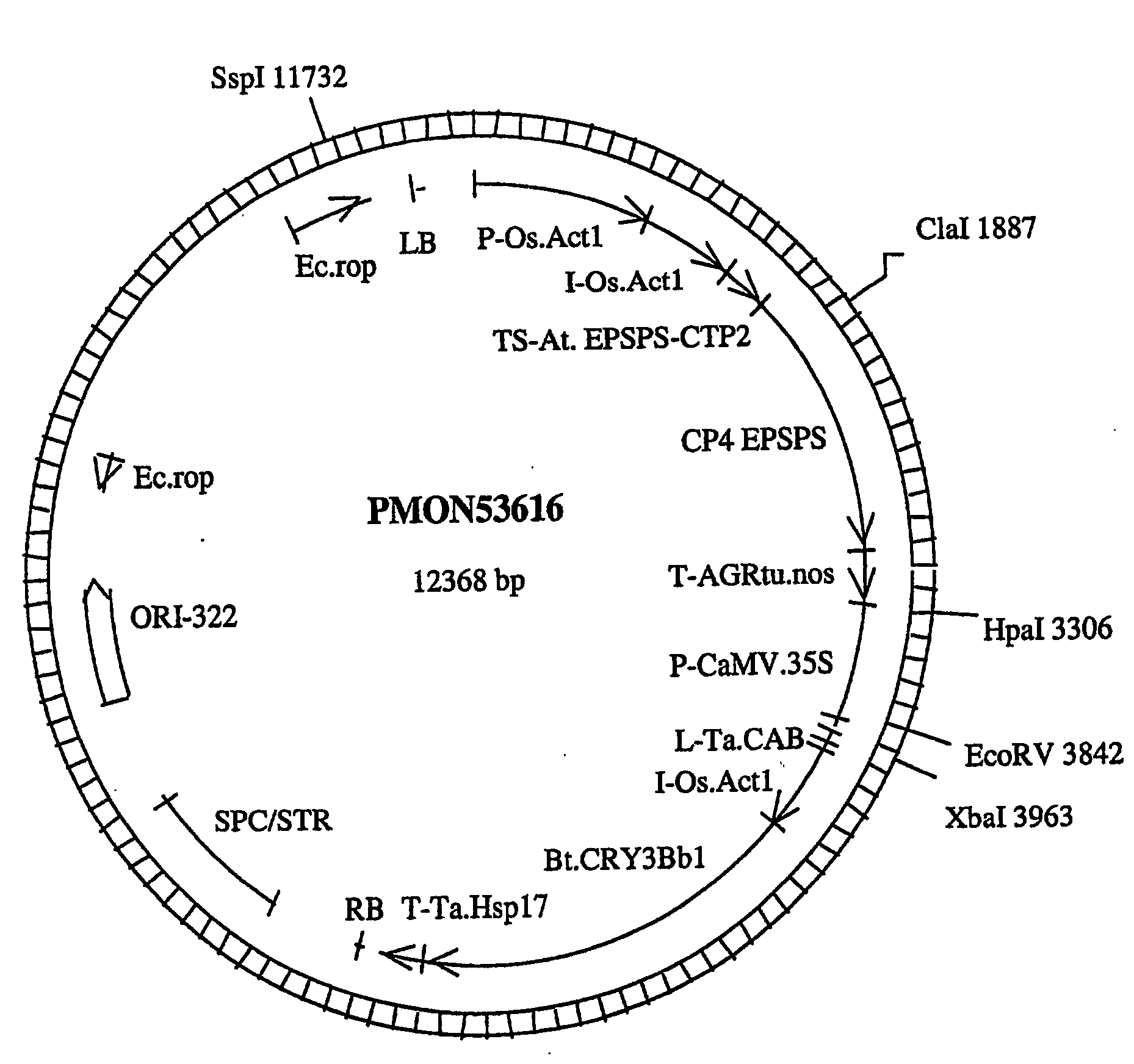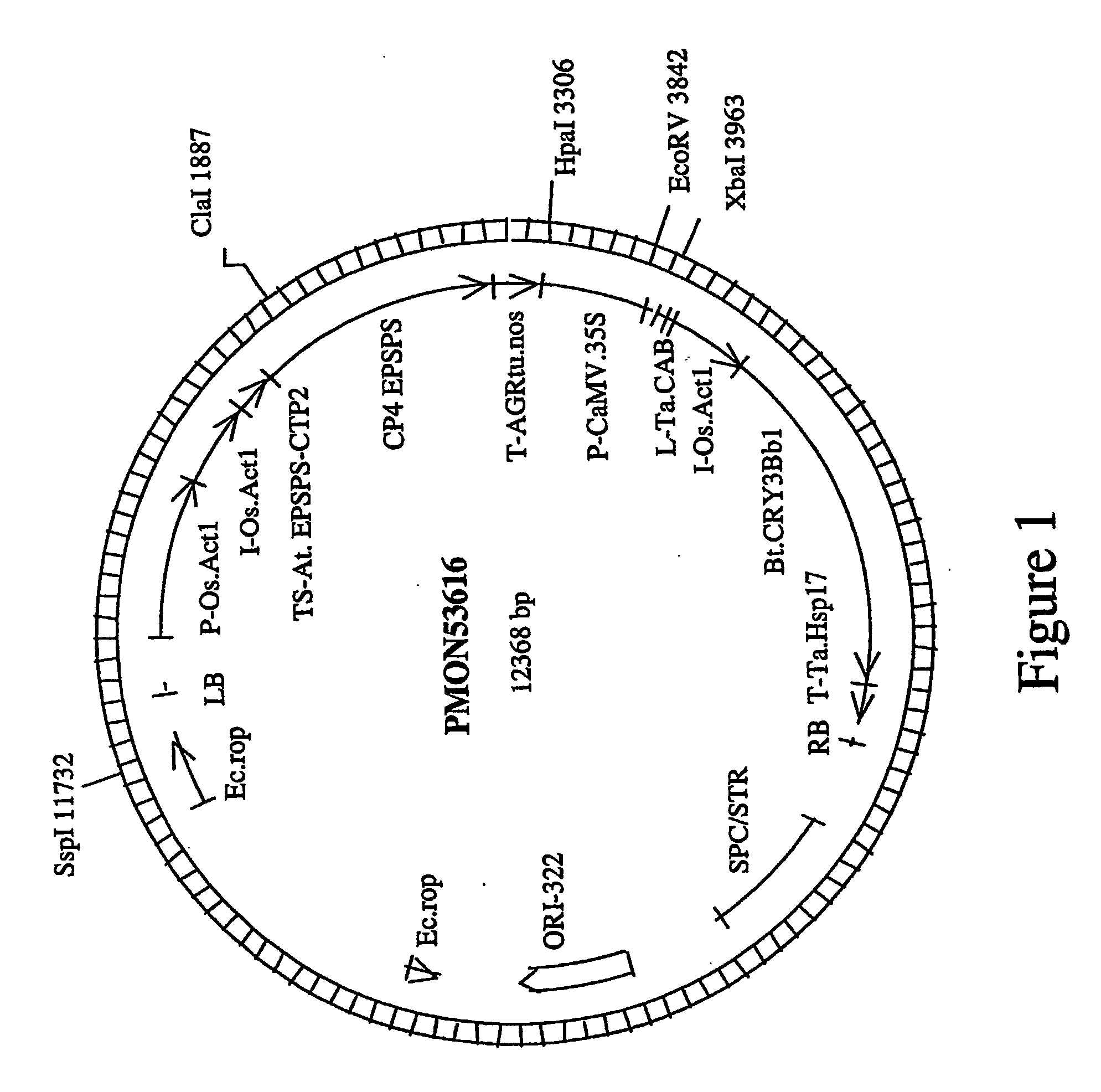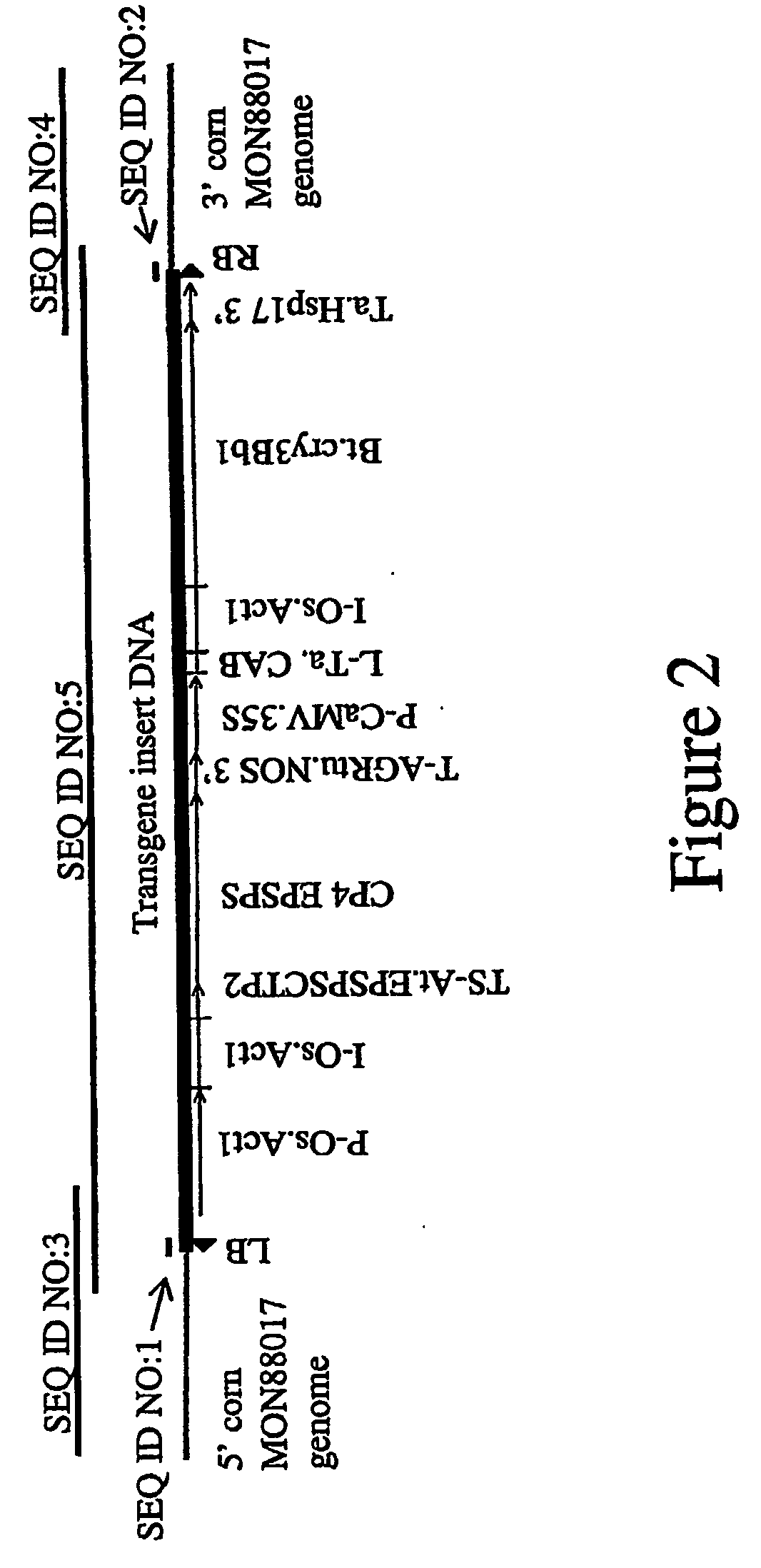Corn Plant Mon88017 and Compositions and Methods for Detection Thereof
a technology of corn plant and mon88017, applied in the field of plant molecular biology, can solve the problem that methods may not be useful in discriminating between different transgenic events
- Summary
- Abstract
- Description
- Claims
- Application Information
AI Technical Summary
Benefits of technology
Problems solved by technology
Method used
Image
Examples
example 1
[0057]The transgenic corn plant MON88017 was generated by an Agrobacterium-mediated transformation of corn cells with a DNA fragment derived from pMON53616 (FIG. 1). The plant transformation construct, pMON53616 was mated into Agrobacterium using a triparental mating procedure (Ditta et al,, Proc. Natl. Acad. Sci. 77:7347-7351, 1980). The DNA fragment of pMON53616 that contains two transgene plant expression cassettes was inserted into the genome of a corn plant cell, the corn plant cell was regenerated into corn plant MON88017. The configuration of the insert into the genome of MON88017 is shown in (FIG. 2). MON88017 and it progeny have tolerance to glyphosate and are resistant to corn rootworm larvae feeding damage. Corn transformation was performed essentially as described herein.
[0058]Liquid cultures of Agrobacterium containing pMON53616 are initiated from glycerol stocks or from a freshly streaked plate and grown overnight at 26° C.-28° C. with shaking (approximately 150 revolu...
example 2
[0061]The corn plant MON88017 was selected from many transgenic corn plants for tolerance to glyphosate vegetative and reproductive injury. The successful production of a commercial quality transgenic plant currently requires producing a large number of transgenic plants. In the present invention, MON88017 was one plant among approximately 472 R0 events that had been transformed with different DNA constructs that included pMON53616. The MON88017 event was selected from the many events by a series of molecular analysis, glyphosate tolerance screens, insect resistance screens, and expression analysis screens.
[0062]Transgenic corn plants were assayed for corn rootworm resistance to feeding damage by greenhouse and field screens. Root damage was rated using the Node-injury Scale (NIS) developed by Oleson and Tollefson of Iowa State University, this scale rates damage done to corn roots using 0-3 values. The 0.00 value describes no feeding damage and is the lowest rating, 1.00 describes ...
example 3
[0064]Genomic DNA from MON88017 and control substances was extracted from corn grain by first processing the grain to a fine powder. Approximately 6 grams of the processed grain were transferred to a 50 ml (milliliter) conical tube, then ˜16 ml of CTAB extraction buffer [1.5% (w / v) CTAB, 75 mM Tris-HCl pH 8.0, 100 mM EDTA pH 8.0, 1.05 M NaCl, and 0.75% (w / v) PVP (MW 40,000)] and 8 microliter of RNase (10 mg / ml, Roche) were added to the processed grain. The samples were incubated at 65° C. for 30-60 minutes with intermittent mixing and then allowed to cool to room temperature. Approximately 15 ml of chloroform:isoamyl alcohol (24:1 (v / v)) was added to the samples. The suspension was mixed for 5 minutes and the two phases separated by centrifugation at ˜16,000×g for 5 minutes at room temperature. The aqueous (upper) layer was transferred to a clean 50 ml conical tube. Approximately 1 / 10 volume (˜1.5 ml) of 10% CTAB buffer [10% (w / v) CTAB and 0.7 M NaCl] and an equal volume of chlorofo...
PUM
| Property | Measurement | Unit |
|---|---|---|
| Length | aaaaa | aaaaa |
Abstract
Description
Claims
Application Information
 Login to View More
Login to View More - R&D
- Intellectual Property
- Life Sciences
- Materials
- Tech Scout
- Unparalleled Data Quality
- Higher Quality Content
- 60% Fewer Hallucinations
Browse by: Latest US Patents, China's latest patents, Technical Efficacy Thesaurus, Application Domain, Technology Topic, Popular Technical Reports.
© 2025 PatSnap. All rights reserved.Legal|Privacy policy|Modern Slavery Act Transparency Statement|Sitemap|About US| Contact US: help@patsnap.com



